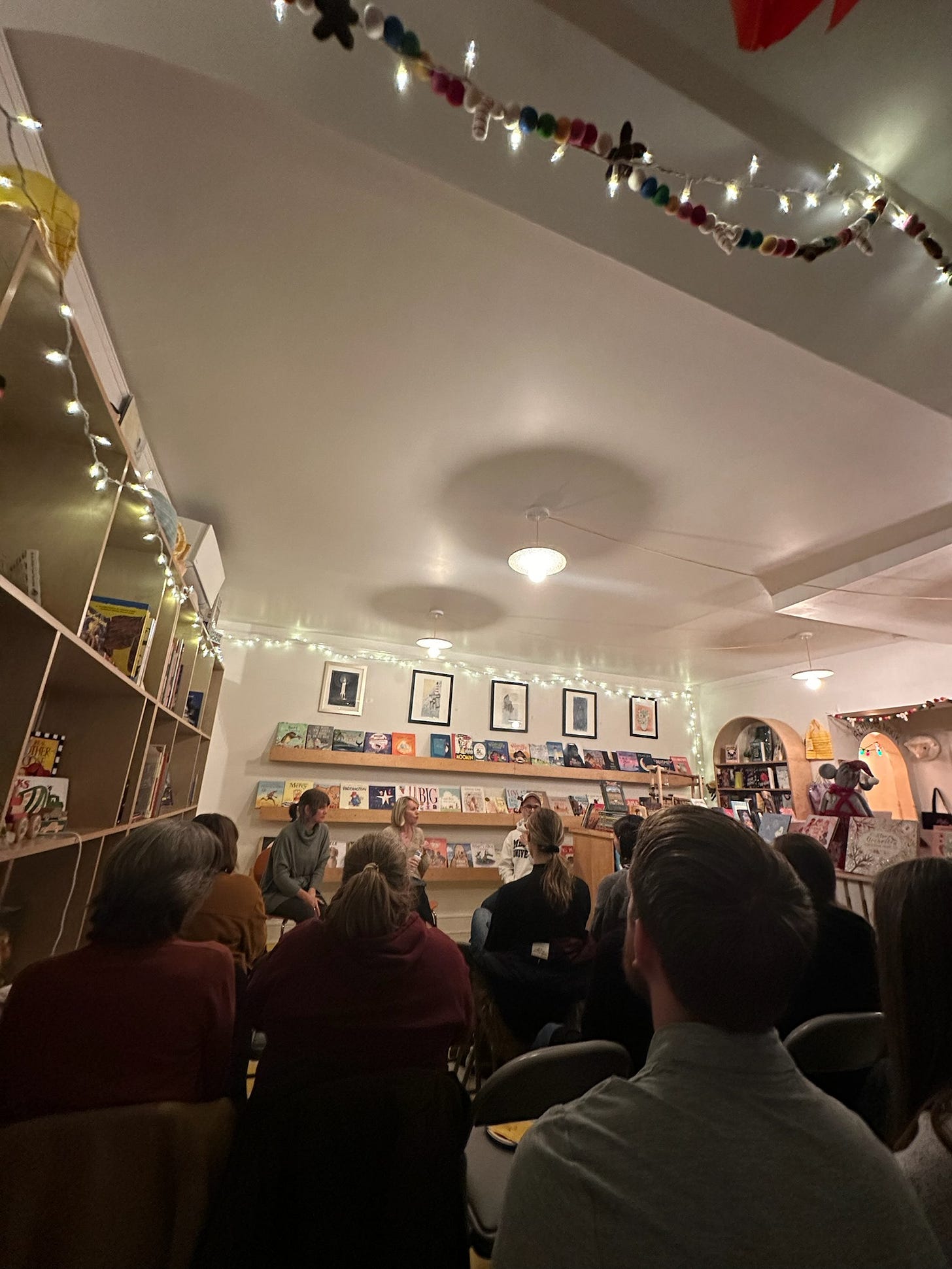This past weekend, I had the honor of attending an evening of conversation with
in Lancaster, PA at , a charming local bookstore that was recently purchased by and .Stephanie shared a reading from her new book, Even After Everything, and answered questions about her writing and publishing journey. As a renowned editor with an established career in publishing, Stephanie didn’t have firm plans to one day write and publish a book. For many years, she considered her writing practice as something personal and sacred.
But something started to happen when she felt a nudge that her private journal writing held stories that went beyond her singular, personal story. (Check out this podcast episode where I shared a few signs for you to look for to know if you’re ready to move beyond writing in your private journal into a space of crafting a piece of work that you intend to publish.) Stephanie started seeing threads of this story that spoke to universal themes that would reach the collective in a powerful way.
One day, Stephanie pulled out post-it notes and started placing them on the wall to represent the timeline of her own personal story. She created another row above for the progression of the liturgical calendar, and another row below for the timeline of the pandemic. With the simple use of visual post-it notes, she was immediately struck by the parallels—whether her personal story directly correlated with the other timelines, or where there was a stark contrast. She saw a story forming that sparked her curiosity, a “magnetic pull” as she described it, to piece together the puzzle pieces of this story unfolding before her.
I strongly recommend Stephanie’s book as a masterclass in crafting a personal story that flows effortlessly from the “I” to the “we” to offer wisdom and insight to readers. Stephanie devoted her (limited!) time and energy to figuring out this puzzle, and it’s evident in how her writing gives language to such an intimate hardship as well as a collective yearning for clarity and resiliency.
Hearing Stephanie speak about her writing process and her magnetic draw to this puzzle made me consider my own writing process as I worked on my forthcoming essay collection. In a similar way, I knew I had a puzzle to piece together to paint a full story that went beyond my own personal story.
Like Stephanie, I also started writing essays in 2020 during the pandemic when, like many of us, I turned to my journal and my laptop to make sense of the world around me. Many of these essays moved from my private journal into a Word document where they took on a more formal structure. As was the case for Stephanie, too, not everything made it into the final draft. Parts of my story (and yours, too, I would bet) are meant for my eyes only. (Revisit this essay about how writing memoir and personal essays is not an opening of our diary.)
The years went on, and the essays and short stories/poems started piling up. I never set out to tell “one story” in these essays. As I wrote them, I didn’t have a vision for how they would all come together in a collection.
Although my book is a very different style from Stephanie’s, I did use a similar visual strategy to piece together the puzzle. In the winter of 2023, I felt my own nudge to polish and publish a collection to feel a sense of completion. (Listen here for more on making a plan for your own creative project.) My aunt graciously let me escape to her waterfront condo for a few days where I enjoyed the small Eastern Shore town’s winter silence.
I have such fond memories of printing out the thick stack of poems, essays, and vignettes, lining them all up on the condo floor, and listening to my Norah Jones’ playlist while I moved around the pieces of my story. At a glance, a messy shuffling of scribbled papers. And yet, it felt like deep and sacred work to find the larger story in the story.
Just as there’s so much power in crafting personal essays (which I wrote about in my inaugural post for Write My Story), there’s an exhilaration that comes with moving around the pieces of your story. There’s not one way to tell a story. Did I want to tell it precisely in chronological order? Maybe. Maybe not. Did I really need to “go there”? Or would leaving out that piece of my story actually protect me and my reader?
In a story that’s filled with disappointment and hardship, it felt empowering to hold the reins. I determined the rhythm and the tone of the story, the flow and the final notes—not a doctor or a loved one or a stranger. Me.
I determined how to paint the story to reach beyond myself, to invite readers to connect and to find creative ways for them to see themselves in my vulnerable story.
My challenge for you: Are there pieces of your story that feel scattered and seemingly disconnected? If you step back and look at the puzzle pieces, can you start to see a larger story emerging? Follow your energy and curiosity to find the universal thread.
It’s the final countdown to my book launch on March 11, 2025! If you would like to directly support the launch, please consider becoming a paid subscriber. Thank you so much for partnering with me on this journey!







I love this and especially appreciate your challenge at the end— very well-timed for me as I’m feeling these nudges myself 🥰